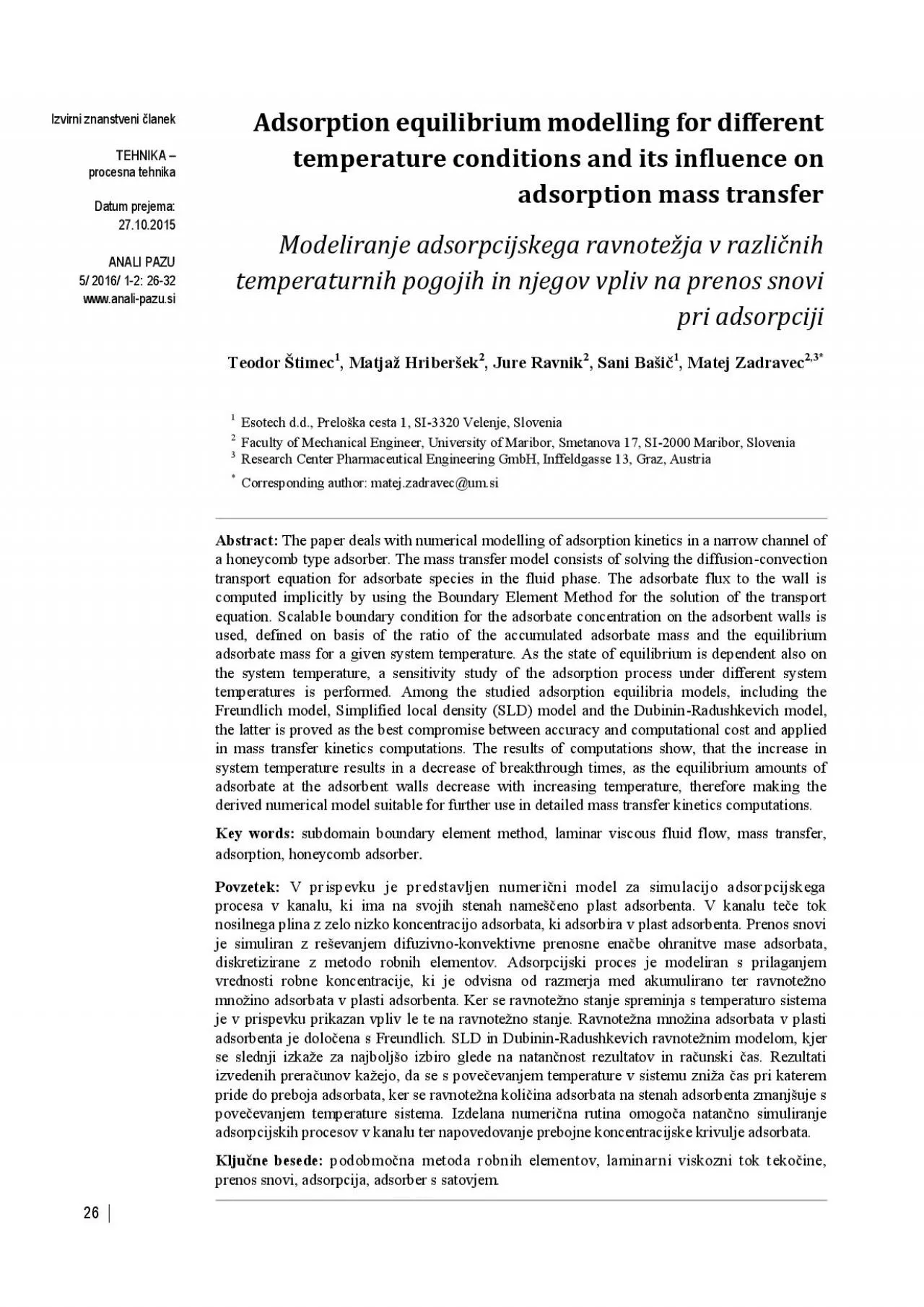PDF-Izvirni znanstveni lanek
Author : delilah | Published Date : 2021-07-03
26 TEHNIKA procesna tehnika Datum prejema 27102015 ANALI PAZU 5 2016 1 2 26 32 wwwanali pazusi Adsorption equilibrium modelling for different temperature conditions
Presentation Embed Code
Download Presentation
Download Presentation The PPT/PDF document "Izvirni znanstveni lanek" is the property of its rightful owner. Permission is granted to download and print the materials on this website for personal, non-commercial use only, and to display it on your personal computer provided you do not modify the materials and that you retain all copyright notices contained in the materials. By downloading content from our website, you accept the terms of this agreement.
Izvirni znanstveni lanek: Transcript
Download Rules Of Document
"Izvirni znanstveni lanek"The content belongs to its owner. You may download and print it for personal use, without modification, and keep all copyright notices. By downloading, you agree to these terms.
Related Documents

